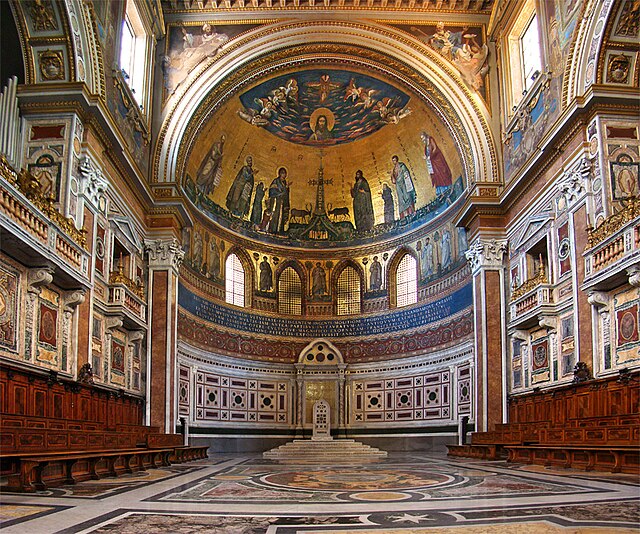Wells Cathedral is an Anglican cathedral in Wells, Somerset, England, dedicated to St Andrew the Apostle. It is the seat of the Bishop of Bath and Wells, whose cathedra it holds as mother church of the Diocese of Bath and Wells. Built as a Roman Catholic cathedral from around 1175 to replace an earlier church on the site since 705, it became an Anglican cathedral when King Henry VIII split from Rome. It is moderately sized for an English cathedral. Its broad west front and large central tower are dominant features. It has been called "unquestionably one of the most beautiful" and "most poetic" of English cathedrals.
West front of Wells Cathedral
Wells Cathedral
From the reflecting pool in the grounds of the Bishop's Palace
Wells Cathedral in the Somerset countryside
A cathedral is a church that contains the cathedra of a bishop, thus serving as the central church of a diocese, conference, or episcopate. Churches with the function of "cathedral" are usually specific to those Christian denominations with an episcopal hierarchy, such as the Catholic, Eastern Orthodox, Anglican, and some Lutheran churches. Church buildings embodying the functions of a cathedral first appeared in Italy, Gaul, Spain, and North Africa in the 4th century, but cathedrals did not become universal within the Western Catholic Church until the 12th century, by which time they had developed architectural forms, institutional structures, and legal identities distinct from parish churches, monastic churches, and episcopal residences. The cathedral is more important in the hierarchy than the church because it is from the cathedral that the bishop governs the area under his or her administrative authority.

São Paulo Cathedral in Brazil is a representative modern cathedral built in Neo-Gothic style.
The cathedra of the Pope as Bishop of Rome, Archbasilica of Saint John Lateran
Etchmiadzin cathedral in Vagarshapat, Armenia, believed to be the oldest cathedral in the world.
The Cathedral of Santa Maria Assunta is a Catholic cathedral in Nepi, Italy








